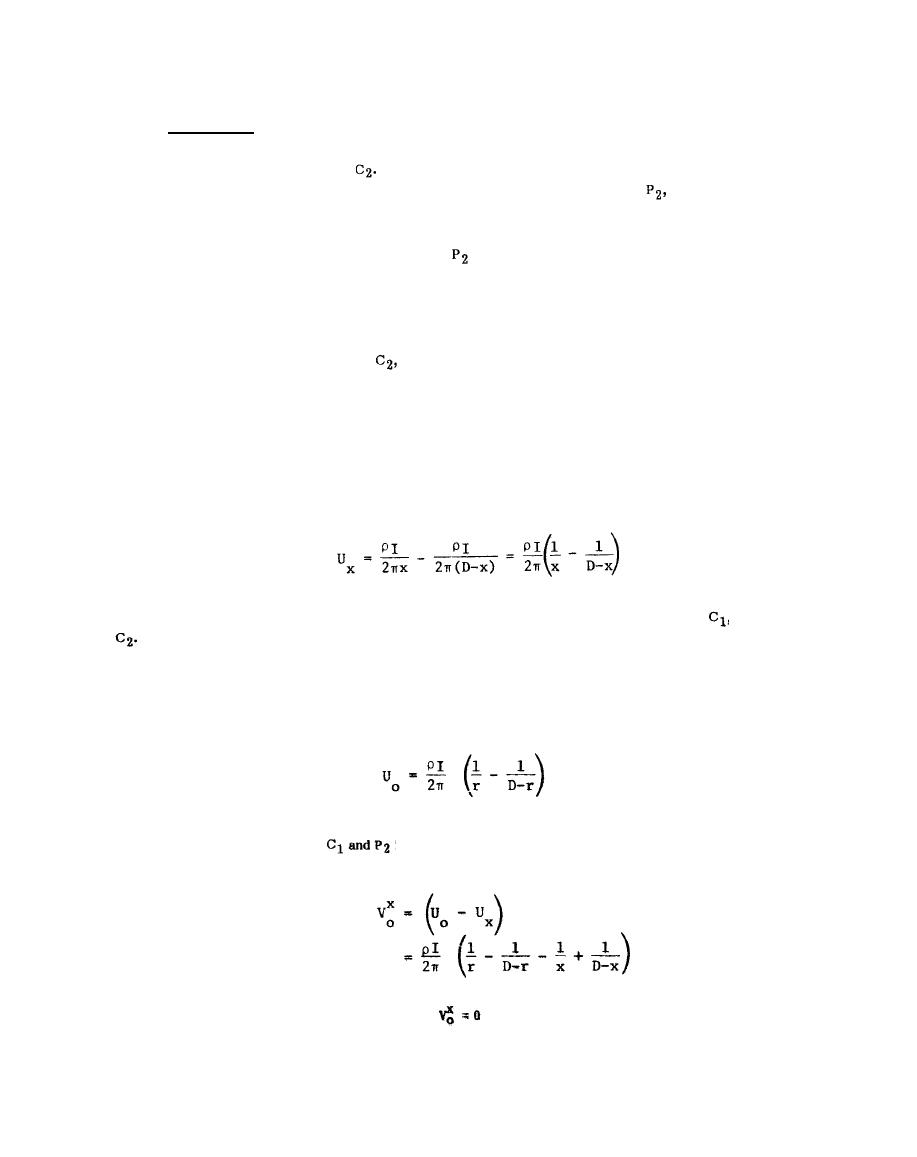

Custom Search
|
|

|
||
 MIL-HDBK-419A
2.7.2.1 Probe Spacing. Current flow into the earth (see Figure 2-8) surrounding an electrode produces shells
of equipotential around the electrode. A family of equipotential shells exists around both the electrode under
test and the current reference probe,
The sphere of influence of these shells is proportional to the size of
each respective electrode. (See, for example, Section 2.6.1.1.) The potential probe,
in Figure 2-15 provides
an indication of the net voltage developed at the earth's surface by the combined effect of these two families
of shells. If the electrode under test and the current reference probe are so close that their equipotential shells
overlap, the surface voltage variation as measured by
will vary as shown in Figure 2-16(a). Since the current
flowing between the electrodes is constant for each voltage measurement, the resistance curve will have the
same shape as the voltage curve. For close electrode spacings, the continuously varying resistance curve does
not permit an accurate determination of resistance to be made.
By locating the current reference probe,
far enough away from the electrode under test to ensure that the
families of equipotential shells do not overlap, a voltage curve like that shown in Figure 2-16(b) will be obtained
to produce the type of resistance curve shown in Figure 2-15.
When the distance, D, between the electrode under test and the current reference probe is very large compared
to the dimensions of the earth electrode subsystem under test, the latter can be approximated as a hemisphere
and interaction between the two electrodes is negligible. When these assumptions are met, the potential at a
point at distance x from the electrode under test is:
(2-39)
where p is the average soil resistivity; the minus sign indicates that the current, I, flows into
and out from
Assume that the electrode under test is equivalent to a hemisphere with radius, r. At the surface of this
hemisphere, the potential is found by letting x = r:
(2-40)
The potential difference between
is the voltage that is being measured and is:
(2-41)
when x = r
2-36
|
 
|
|
 |
||